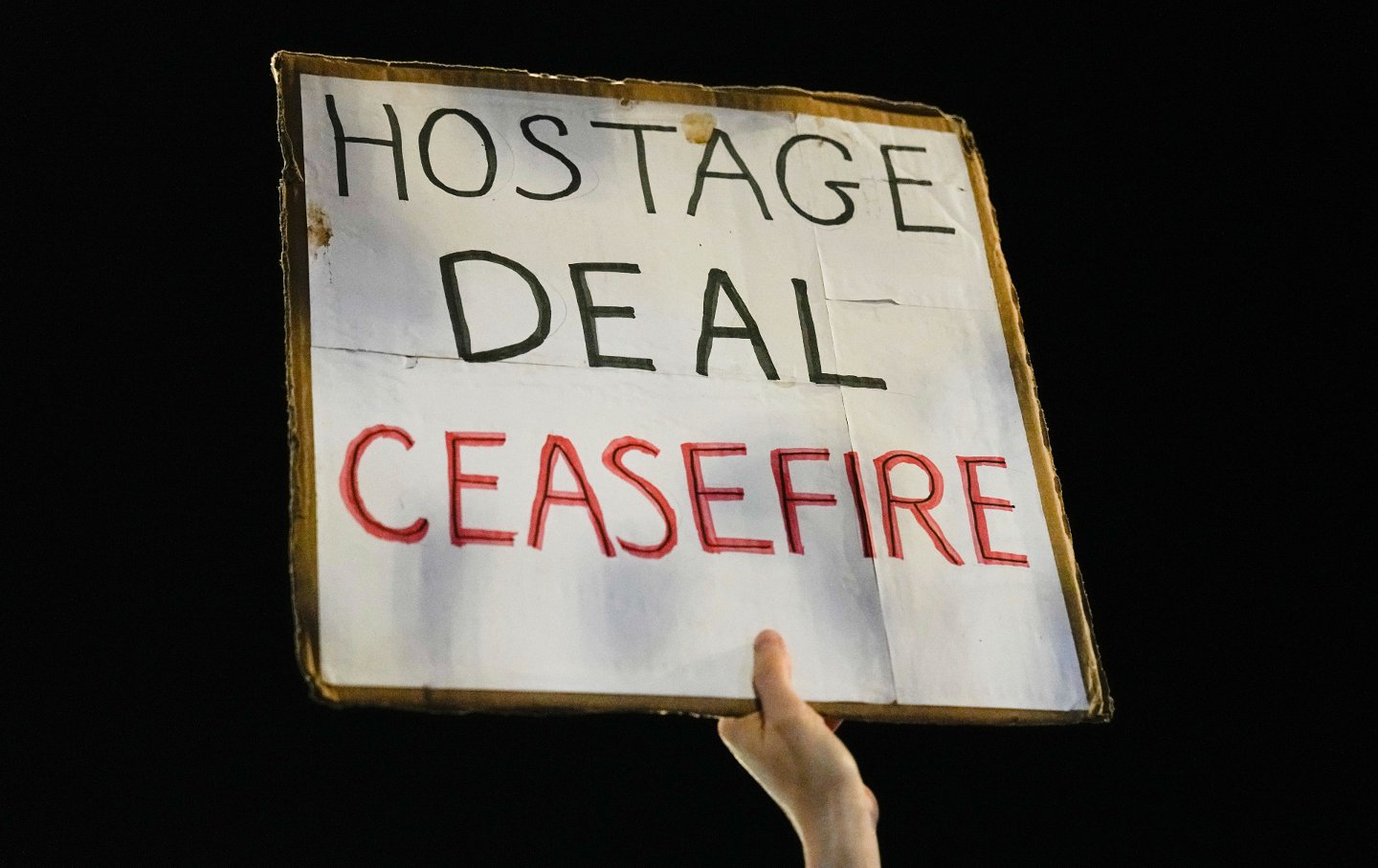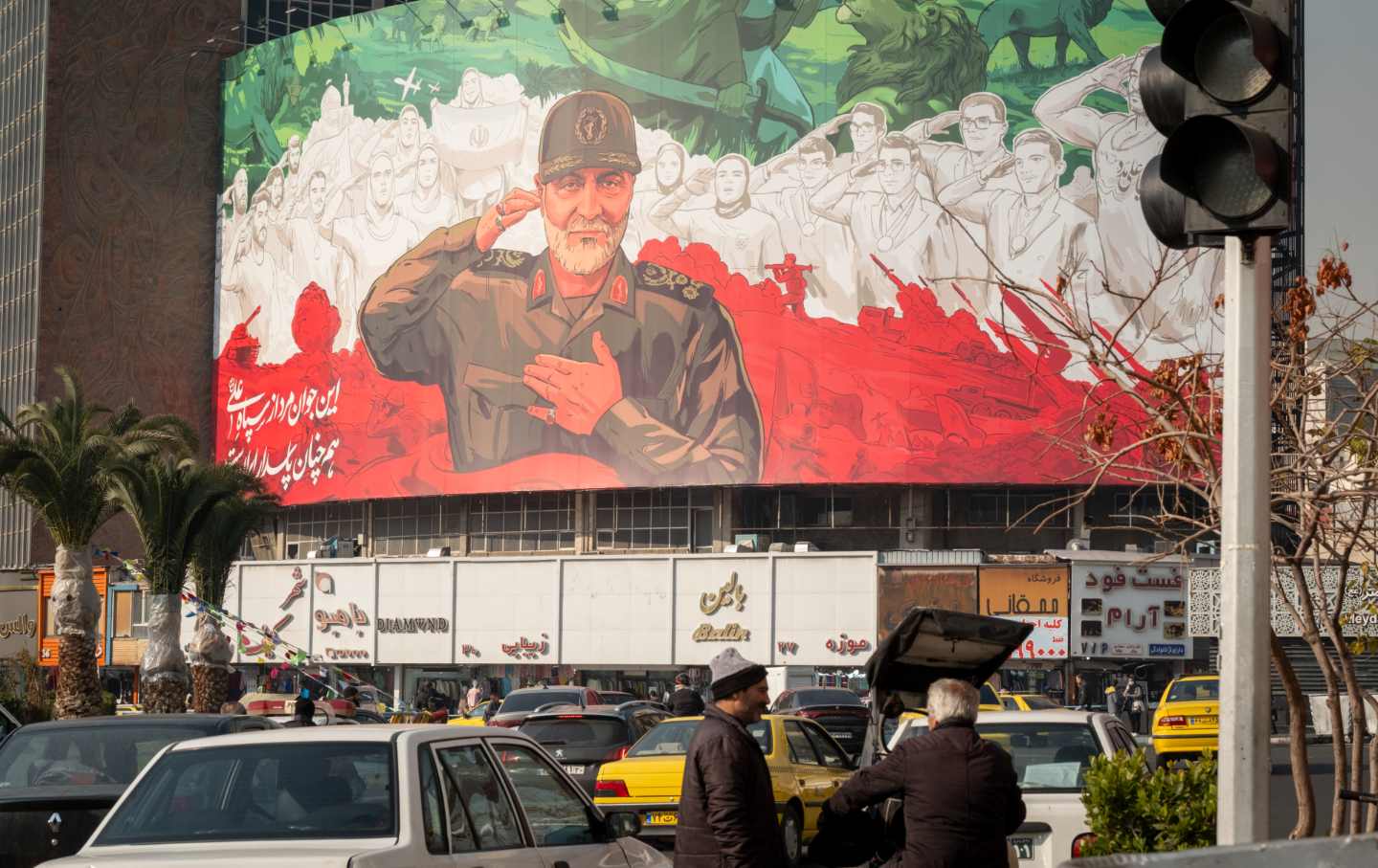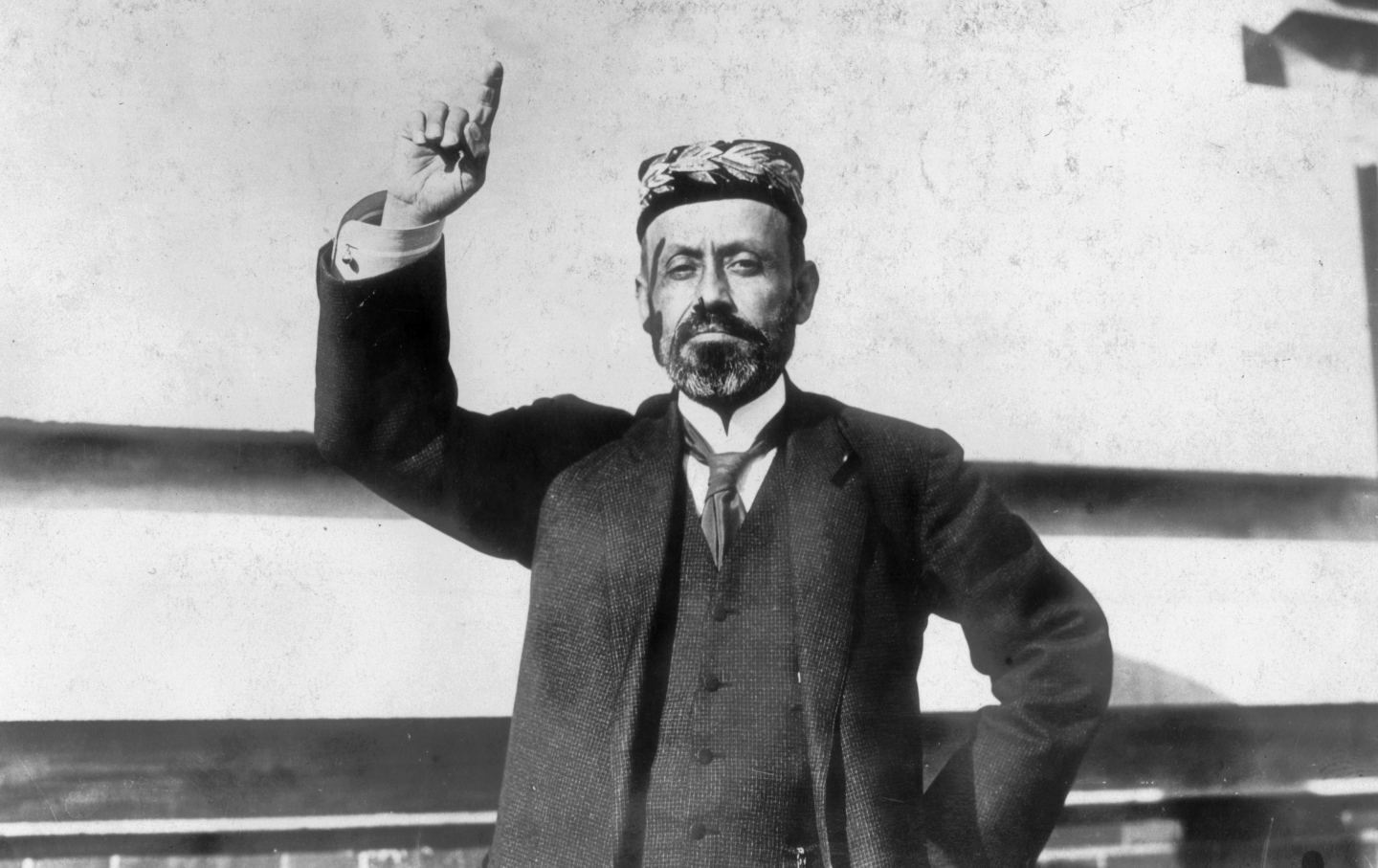This Truce Reflects the Failure of Israel’s War on Gaza
Israel has slaughtered thousands, but its goal of eradicating Hamas remains as far-fetched as ever. It needs to face facts and use this truce to move towards a lasting peace.

Families and friends of about 240 hostages held by Hamas in Gaza call for Israeli Prime Minister Benjamin Netanyahu to bring them home during a demonstration in Tel Aviv, Israel, on Tuesday, November 21, 2023.
(Ariel Schalit / AP)Forty-six days into Israel’s war on Gaza, a ray of hope. Early on Wednesday, the Israeli government formally approved a temporary cease-fire and hostage swap deal with Hamas. Fifty Israeli women and children will be freed in exchange for 150 Palestinian women and children held in Israeli jails. An initial four-day cease-fire will be maintained during these releases, and the cease-fire could be extended if more people are freed. Hundreds of trucks carrying aid, medicine, food, and fuel will enter Gaza during this period, and be allowed to disburse their goods all over the Strip, including areas that have been unreachable for weeks.
The agreement will reunite hundreds of Israeli and Palestinian captives in both Israel and Gaza with their families. Above all, it will give the people of Gaza at least several days of respite from some of the most intense and indiscriminate bombings the world has seen in decades.
I recently wrote about how the various postwar plans for Gaza being floated by the United States and Israel reflected the failure of both governments to comprehend what brought us to this point. Now, this new deal reflects the failure of this entire war.
The precise death toll in this nightmarish war is currently unknown. While Israel downgraded the number of people it says were killed on October 7 from 1,400 to 1,200, the Palestinian Ministry of Health in Gaza has been unable to update its numbers since the Israeli military escalated its attacks on Gaza’s hospitals, primarily Al-Shifa Medical Complex where much of the tallying took place. (According to the Associated Press, health officials in the West Bank have been issuing their own list of deaths in Gaza, though it’s far from clear how accurate their numbers are.) At the time the lists stopped being updated, an estimated one in every 200 people in Gaza had been killed. It’s now thought that number is considerably higher, with thousands missing under the rubble.
Those thousands did not have to die—not just because Israel could have refrained from targeting civilians, which it has clearly refused to do, but because the contours of the deal announced Wednesday have been on the table for weeks. On October 26, The Washington Post quoted Hamas leader Ali Barakeh as he laid out what Hamas had pitched: the release of foreign hostages in exchange for a five-day cease-fire, followed by the release of Israeli women and children in exchange for Palestinian women and children held in Israeli jails and an influx of aid into Gaza. “We are ready to let them all leave,” Barakeh told the Post.
That same day, the Qatari official leading the negotiations between Israel and Hamas made a rare media appearance, warning that a potentially imminent deal could be derailed if the situation in Gaza worsened. Twenty-four hours later, Israel cut off telecommunications in Gaza and intensified air strikes; it would not be the only time in the next few weeks that an Israeli escalation would throw a budding deal off.
The Israeli government has made its disregard for the lives of Palestinians clear, but its intransigence has also cost the lives of dozens of Israeli soldiers killed during this time, as well as an unknown number of hostages believed to have died under Israeli bombs.
Meanwhile, President Biden’s statement after the deal was announced claimed that he had “no higher priority” than the return of American citizens held by Hamas. But rather than use his unparalleled leverage over Israel to prioritize an earlier deal that would have gotten captured Americans home, the US president has seemed more interested in buying Israel time to expand its destruction in Gaza over the last month.
If anything sums up the utter failure of this war, it is that. Between the genocidal calls to flatten Gaza and arrogant claims that the Israeli army wouldn’t stop until they had destroyed Hamas, there was clearly no strategy and no plan other than vengeance and destruction. A lot has been said and written in the last six weeks; few things have been as relevant as the Israeli Army spokesman’s admission that “the emphasis is on damage and not on accuracy,” or reservist major general Giora Eiland’s vow that “Gaza will become a place where no human being can exist.”
The inherent savagery of those statements has been realized. Entire districts of northern Gaza, once home to over a million people, have been bombed to rubble. There is one functioning hospital remaining there. Gaza’s universities have been all but wiped out. With over 200 of the territory’s medical professionals and journalists killed, how will the ranks of doctors and reporters be replenished? When will Gaza’s students be able to resume their education? How will patients needing MRIs or chemotherapy be able to receive treatment? Where will the tens of thousands of people who’ve been bombed out of their homes now live?
Even these urgent questions seem premature. Because what a cease-fire will mean for people in Gaza is far more basic. For the first time in six weeks, Palestinians will be able to mourn their dead without worrying about who will be next. The bodies that have been decomposing for weeks in the streets might be collected, finally given the dignity of a burial. People might be able to find food and water for their families. The estimated 6,000 people missing under collapsed homes might be recovered. Loved ones might be able to finally confirm who among them is still alive. And with Israel temporarily halting its continual bombardment of the roads out of northern Gaza, more families might be able to get away from what is, at least for now, the heart of the war zone.
Popular
“swipe left below to view more authors”Swipe →The focus on making Gaza uninhabitable has, conversely, gotten Israel no closer to its stated goal of destroying Hamas. Political analyst Mouin Rabbani puts the battlefield reality in context. “Judging by the situation on the ground, Hamas as a military force has not been significantly degraded. Command and control is intact; Israeli casualties are increasing; rocket barrages, ambushes, and the like continue on a daily basis; and, apart from the speaker of parliament Ahmad Bahr, who is not involved in the military defense of the Gaza Strip, no senior leaders have been assassinated,” he says.
The very fact that Israel (and the US) have been negotiating with Hamas this entire time shows that it remains sound as an organization. And as Rabbani notes, by including the entry of aid as a provision of the deal, “Hamas has in one fell swoop achieved exponentially more on the humanitarian front than the much-vaunted US “negotiations” about humanitarian relief during the past month.”
Furthermore, this deal does not seem to include the release of men, or the captives Hamas considers most valuable: Israeli soldiers. It still has plenty of leverage, and it will seek to exploit that to bring about an end to the war and achieve its goal of ending the 17-year-old siege on Gaza and bringing home the thousands of Palestinian prisoners in Israeli jails.
While Israel and the United States don’t seem to have significantly degraded Hamas, they’ve done that and more to the concept of Western liberal values. There’s a direct line between National Security Council spokesman John Kirby’s asserting that the US was not “drawing red lines” for Israel and the wanton disregard for international law seen in Israel’s continuous attacks on hospitals and UN schools used as shelters. Biden’s bizarre attempts to draw a parallel between Vladimir Putin and Hamas have only highlighted the hypocrisy the rest of the world is seeing; occupation is seemingly only bad when done by rivals of the US.
As one G7 diplomat told the Financial Times in the early days of this war, “All the work we have done with the Global South [over Ukraine] has been lost.… Forget about rules, forget about world order. They won’t ever listen to us again.”
At this point, it is worth remembering that the truce between Israel and Hamas is only temporary. But its potential to endure might be the reason Israel dragged its feet on this deal for weeks. A cease-fire accompanied by images of prisoners being released to their families might create public momentum—both inside Israel and internationally—to find a negotiated end to the slaughter. This is something Israeli Prime Minister Benjamin Netanyahu and Defense Minister Yoav Gallant probably want to delay as long as possible, because the October 7 Hamas attack happened on their watch. A long-term lull in the fighting will increase the likelihood of their having to face accountability.
A pause in the war will also mean that Israel’s international backers might find the will to reflect the desire of their populaces, many of whom are strongly in favor of a cease-fire. Polling has consistently shown this to be the case even in the United States. And Politico reports that the Biden administration is worried that the truce would allow journalists “broader access to Gaza and the opportunity to further illuminate the devastation there and turn public opinion on Israel.” This concern comes across as particularly cruel when Israel has killed 46 Palestinian journalists in Gaza since October 7.
Of course, public opinion alone will not be enough to stop the Israeli war machine, especially if US weapons continue to bolster it. Netanyahu and Gallant are already promising that combat will resume again. If the bombing picks back up, it will be a continuation of an incoherent policy that will destroy Gaza’s civilian population, will not dismantle Hamas, and will not result in the release of Israeli captives.
When it carried out the October 7 attack, Hamas sought to break the status quo of siege and containment. Israel’s superior military force can keep turning neighborhood after neighborhood in Gaza into rubble, but if there’s to be any hope for a better future, there must be political engagement even among enemies. The truce and prisoner swap is only a beginning, but it shows us that this is possible.
More from The Nation

Europe Signs Up for More Humiliation by Trump Europe Signs Up for More Humiliation by Trump
As the post–Cold War order cracks up, the fault lines don’t just run through the Atlantic, but Europe itself.

European Cowardice Is Empowering Trump’s New Imperialism European Cowardice Is Empowering Trump’s New Imperialism
NATO allies don’t want to confront Trump’s aggression. But they may ultimately not have a choice.

The Assassination That Paved the Way for Trump’s Venezuela Attack The Assassination That Paved the Way for Trump’s Venezuela Attack
How Trump’s illegal 2020 killing of Qassem Soleimani—and the West’s indifferent response—laid the groundwork for the brazen abduction of Nicolás Maduro.

Before There Was Nicolás Maduro, There Was Cipriano Castro Before There Was Nicolás Maduro, There Was Cipriano Castro
Behind today’s headlines is a history of imperial outrage—including a Philadelphia contract man who wreaked havoc in early-20th-century Venezuela and helped oust a president.

The US Is a Rogue State That Deserves to Be Sanctioned The US Is a Rogue State That Deserves to Be Sanctioned
Where is the international outrage over the US assault on Venezuela and kidnapping of Maduro?



